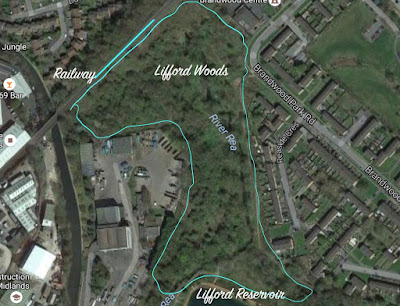Crafting a woodland, a 'Centenary Woodland' just 25 years old
CRAFTING A WOODLAND
The term 'Woodland' has been described, and wooded land defined, by many people over many centuries in a variety of ways, both trees and woodland have been utilised, managed and mis-managed by people of the British Isles for millennia.
For a rounded presentation of the subject it is worth reading 'Trees and Woodland in the British Landscape' by Oliver Rackham, first published in 1976; in which the term 'woodland', together with tree species and the impact of trees and woodland on human existence, is thoroughly investigated and questioned.
Rackham acknowledges -"six traditional ways in which trees interact with human activities", whilst discounting "Orchards, and trees of streets and gardens" as outside the scope of the book.
. The others are -
The term 'Woodland' has been described, and wooded land defined, by many people over many centuries in a variety of ways, both trees and woodland have been utilised, managed and mis-managed by people of the British Isles for millennia.
For a rounded presentation of the subject it is worth reading 'Trees and Woodland in the British Landscape' by Oliver Rackham, first published in 1976; in which the term 'woodland', together with tree species and the impact of trees and woodland on human existence, is thoroughly investigated and questioned.
Rackham acknowledges -"six traditional ways in which trees interact with human activities", whilst discounting "Orchards, and trees of streets and gardens" as outside the scope of the book.
. The others are -
- Woodland. Woods are land on which trees have arisen naturally.
- Wood-pasture. involving the "grazing of animals as well as trees"
- Plantation. areas of planted trees
- Non-woodland. "trees in hedgerow and field"
Human activity is central to the existence of all woodland in Britain today and has been for several thousand years. Human activity is about intervene once again in an area we now call 'Centenary Woodland', which, until 26 years ago was 'open' land, disused allotment and 'talked about' in terms of Forestry Commission grant aiding.
In 1989 up to 2000 trees were planted as 'whips', at approximately 1 metre centres; many of the original trees/whips are long gone, falling to competition, fragility, field voles, squirrels and humans. Many have thrived, some are weak or damaged and some have been coppiced, pollarded, felled or left to stand tall as dead timber.
Over the next two years approximately 30% of the current stand will be felled, a decision not carved in stone, and thankfully not fully determined;
Nature Improvement Area
Funding has been made available to the Birmingham and Black Country Wildlife Trust through Natural England and DEFRA to improve green areas for the benefit of nature. Many plantations were created around Birmingham in the 1980's and 90's and are now due for enhancement. Most were not well planned, with single species planted together in blocks, in days when 'guilding' was little thought of, if at all. Essentially 'guilding' relates to the practice of 'permaculture', in which plants are positioned in relation to others to maximise the thriving potential of all, and thereby attempting to mimic nature to some extent.
At Centenary Woodland we have 'mono-stands' of Birch, Ash, Scots Pine together with a stand of Cherry and Hornbeam, and whilst they are all valuable wildlife trees, greater diversity will develop by felling selected trees and underplanting with a variety of other species such as Hazel, Guelder Rose, Spindle, Alder Buckthorn as well as ground flora such as Bluebell, Primrose, Campion and Wood Ruff. Self set Holly seems to be doing rather well and spreading throughout, whilst a number of Yew are maturing quietly and slowly.
PAWS, the B&BCWT's 'People and Wildlife Service' together with BCC Rangers and volunteers will carefully 'craft the woodland' with overriding attention to improving the biodiversity of the area and its surroundings. Assessment will be on-going and plans changed as necessary through discussion and consultation.
We hope that many will benefit from witnessing, observing, engaging and interacting with the woodland management process.
Cannon Hill Park Friends, alongside Rangers and the NIA team will invite and encourage volunteers, local schools and families to take part in a range of woodland based activities, including den building, woodland crafts, and environmental games as well as helping with the processing of timber into habitat piles.



Comments
Post a Comment